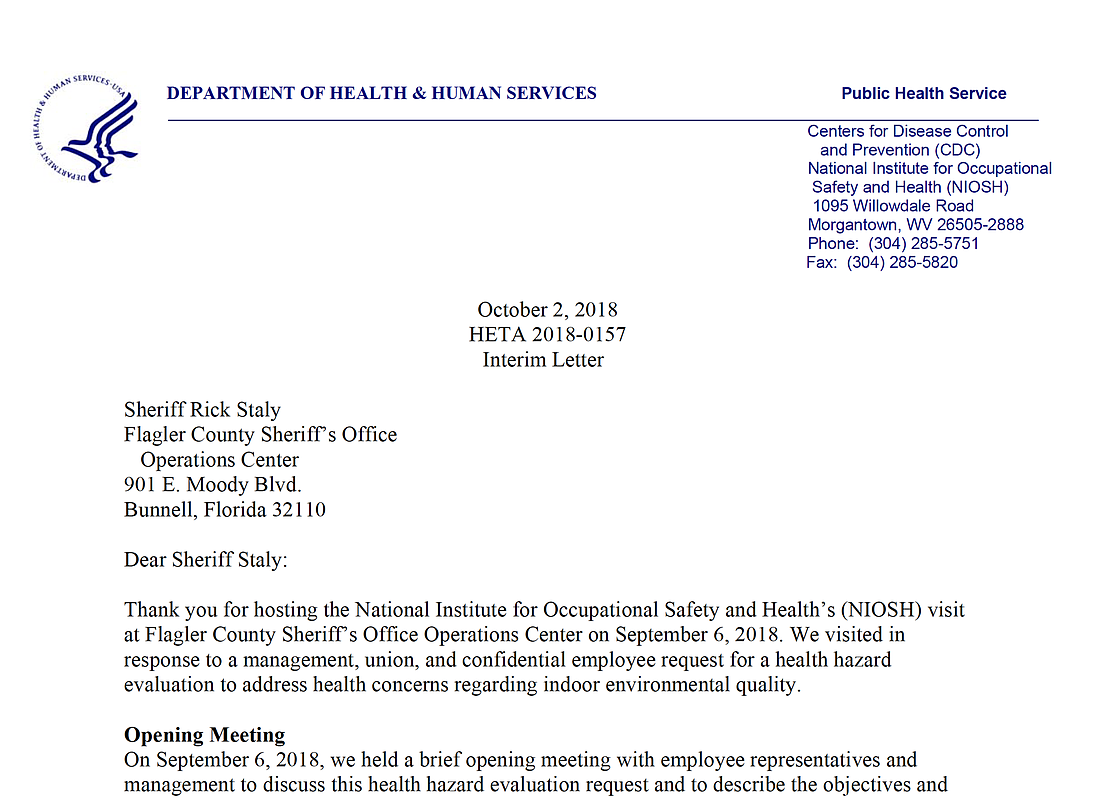- April 26, 2024
-
-
Loading

Loading

The Centers for Disease Control has sent an "interim letter" to Flagler County Sheriff Rick Staly concerning the CDC's Sept. 6 visit to the Sheriff's Operations Center and has recommended having a contractor check the building for water intrusion and hidden mold growth.
The county-owned Sheriff's Operations Center has been evacuated since June after multiple Flagler County Sheriff's Office employees said they thought the building was making them sick.
“We will do everything within our authority to implement the CDC recommendations,” County Administrator Craig Coffey said in a county news release about the CDC letter. “Next week, we will reach out to the Sheriff’s Office to develop a plan.”
The four-page Oct. 2 letter — which was copied to various county, OSHA and Department of Health officials, plus the FCSO's union representatives — stated that the CDC experts had conducted a walkthrough visit, held meetings with FCSO employees and management, and interviewed 26 employees.
The experts noted areas of patched roof on the building indicating possible water intrusion and potentially causing mold growth, as well as water stains in the evidence room — but the letter did not recommend further testing for mold spores, stating:
"This potential for hidden mold is consistent with employee reports of musty odors (especially after rains), and health symptoms. ... At this time, we do not recommend further air sampling for mold spores. There are no U.S. health-based exposure limits for biological contamination set by the Occupational Safety and Health Administration (OSHA) or recommended by NIOSH. Measurements of mold in air are highly variable and dependent on the mold species' lifecycle stages (e.g., spore formation). In many cases, very short-term sampling for mold spores is conducted and results may not be representative of actual exposures."
Instead, the CDC's interim letter recommended that the county do the following things to the building:
The letter states that the CDC is reviewing mechanical drawings, ventilation testing and balancing reports, photographs, and field notes, and will provide more information as it becomes available. The complete letter can be viewed HERE.